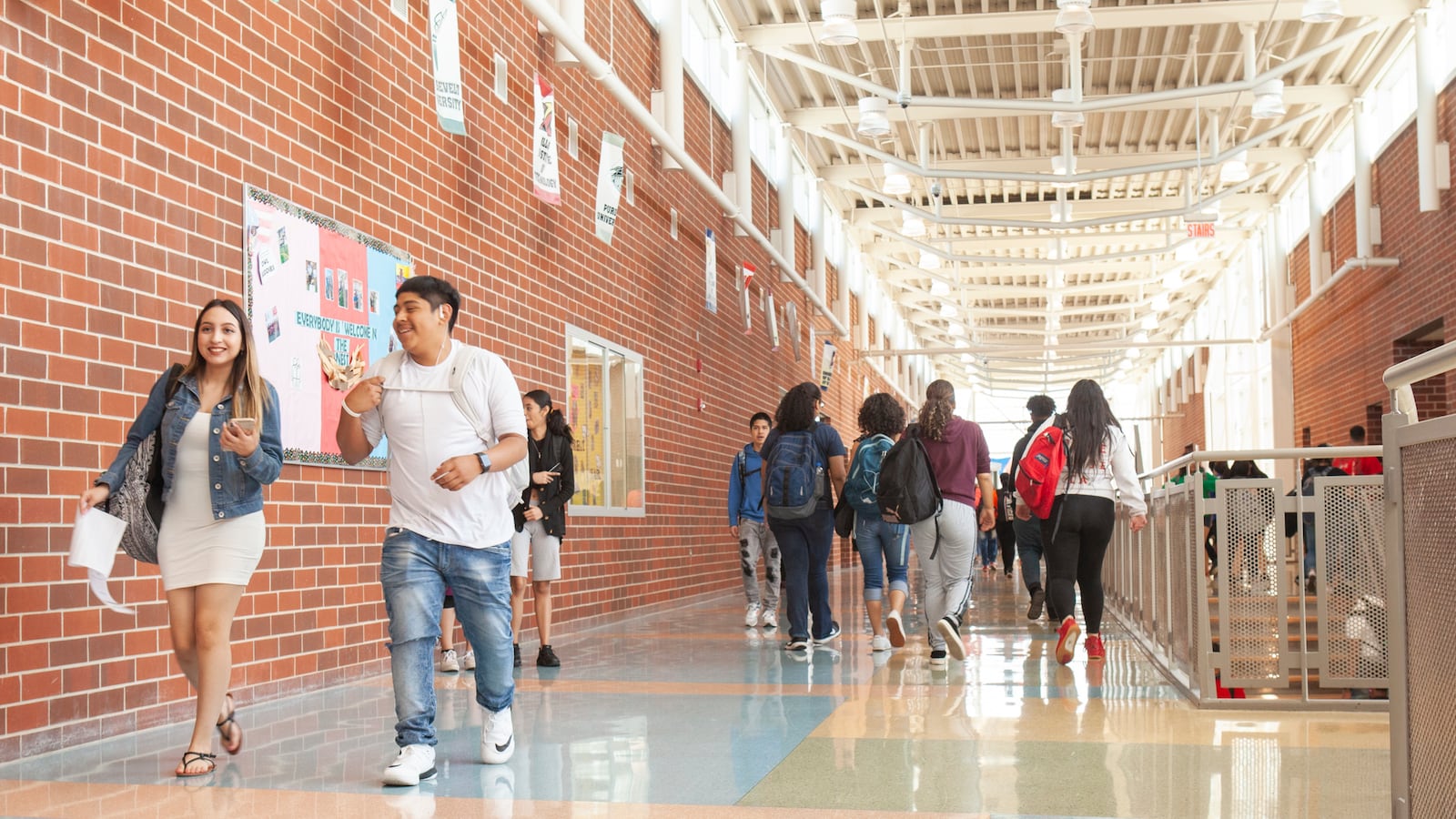Despite Chicago Public Schools reaping $198 million more for the coming school year for its $6.1 billion operating budget, the district will add just around 100 more special education case managers, social workers, and nurses to schools.
Why Chicago’s 600-plus schools won’t immediately see a bigger surge in support staff was a central question at a budget hearing Tuesday.
While the budget plan directs $73 million more to schools sites next year, most of that money is intended to support special education and new programs, not fill gaps in support staff. Among the other areas of new investment are supplemental bilingual teachers, opening more preschool classrooms, and awarding “equity grants” to spread desirable programs to under-enrolled schools.
At the first of two back-to-back hearings, educators wearing teachers’ union T-shirts — the union bused members over after a meeting about their lapsed contract — described conditions at their schools and demanded to know how Chicago plans to shore up its support staff.
The school board votes on the plan on Aug. 28.
Educators described students needing medical attention but schools having a nurse on campus only one day a week, and shortages in social workers at one school where several children lost parents to gun violence.
One teacher, Yvette McCaskill, from Morrill Math and Science Elementary on the Southwest Side, said her school library was shuttered and the librarian redirected to fill a special education vacancy, while McCaskill was asked to teach a class for English language learners.
“Spoiler alert: I’m not bilingual,” she told the school board.
During the hearing, district leaders set out to explain the discrepancies between long-range plans and the reality on the ground.
In July, Mayor Lori Lightfoot and schools chief Janice Jackson announced that the district would hire hundreds more social workers, nurses and case managers for special education students.
But those positions will be spread across five years, said Matt Lyons, the district’s chief talent officer. He acknowledged schools face a critical shortage of credentialed workers, even though the district has ramped up hiring.
Already, the district has increased the number of social workers by 7% from last year to 490, he said. “We will start this coming school year with more social workers than any point this last decade.”
Timing and supply-demand issues also work against a large district. The mayor’s pledge to add support staff came in July, well after the normal January-February hiring season, he said. And opening positions for special education case workers in one area of the city could end up poaching staff from others.
“If we open five case manager positions on the North Side, we likely create three to four teacher vacancies on the South Side,” he said, adding that the district is trying to be “very deliberate” about how it rolls out positions.
Lyons said the district has been trying to broaden the field of candidates by covering tuition for some registered nurses and social workers to earn credentials to work in schools. His team has also focused on recruiting from top-flight programs in the region, like the University of Chicago’s School of Social Service Administration, to boost supply.
Administrators also described ongoing financial pressures. Since a 2015 budget crisis, Chicago Public Schools’ financial position has improved in part because of increased state revenues. Illinois passed a new state funding formula in 2017 that directed more money to schools statewide.
But Chicago is still short $2 billion from what the state’s formula estimates it needs to educate its 361,000 students, most of whom are low-income. And it is the second most indebted school system in the country, which means a chunk of the overall budget — some $700 million — will be diverted this school year to pay down the district’s $8.4 billion long-term debt. Another $450 million will go toward short-term debt and $855 million will go toward teachers’ pensions.
Because it still has a negative cash balance, the district regularly takes out short-term loans, and pays interest on them, to help cover day-to-day operations between influxes of tax revenue.
Including $800 million more for building repairs and upgrades, Chicago’s total projected spending for the 2019-20 school year is $7.7 billion. To see which schools are in line for immediate improvements, click here.
Chicago plans to employ 20,080 educators, 1,100 school-level administrators, and another 10,800 support staff this school year. Staffing costs the district $3.3 billion in the plan.
The district’s central office will grow by slightly more than 100 positions with the bulk of new hiring concentrated in the department that will steer a $135 million curriculum overhaul project, in the inspector general’s office, and in the office that protects students.
By the 2021-22 school year, Lightfoot promised two full-time special education case managers to schools with 240 or more special education students, and one full-time case manager to schools with more than 120 special education students.
The mayor proposed adding 200 social workers to Chicago schools over the next five years, along with 250 full-time nurse positions.
Staffing has been a key teacher ask in contract negotiations with the district. Besides raises, the union wants the district to hire nearly 5,000 teachers, professionals and aides, at a cost of $880 million over three years.
The union has complained that, despite Lightfoot’s campaign pledge to increase government transparency, the budget remains opaque. For instance, public documents don’t clearly account for the added positions.
The district responded that it hadn’t listed all proposed new positions in the budget document yet, but the money for them was there in a contingency line item.
On Tuesday, that response appeared to satisfy the school board, which asked leaders to consider preparing a list of common questions and answers to help explain details to the public.
Corrected: This story was updated to clarify how Chicago’s additional budget monies will be allocated.

